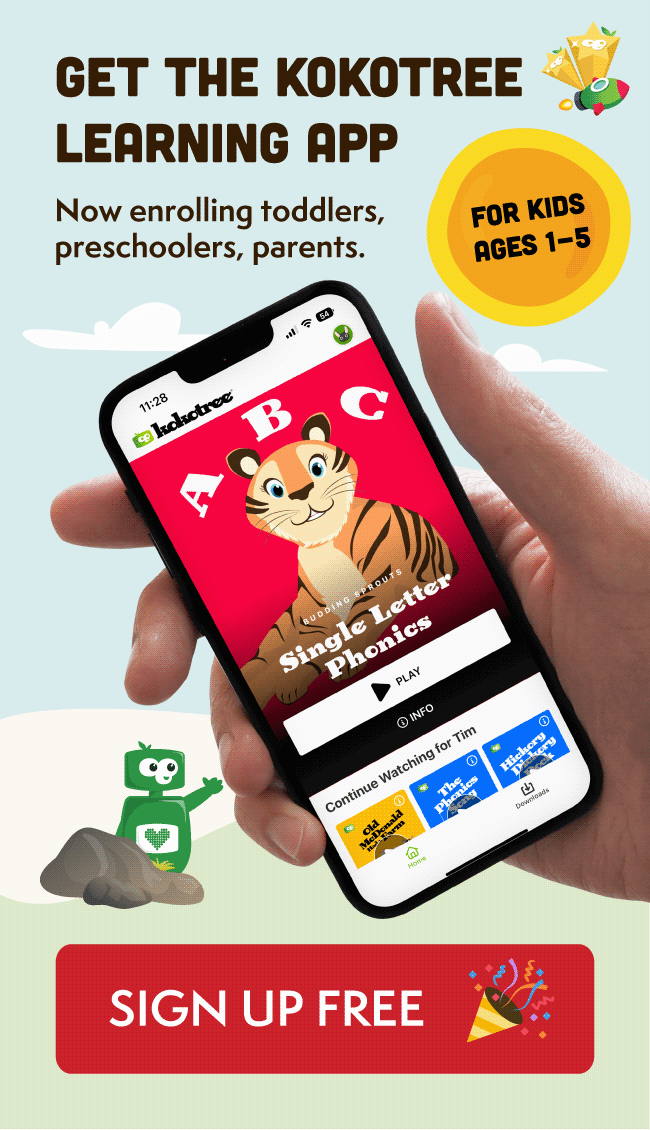

As the parent of a toddler, it can be equal parts frustrating and puzzling when your child decides to launch their meal across the room instead of eating it. Rest assured, you’re not alone! Food-throwing behavior is quite common in young children, and it’s a phase most parents have to navigate.
In this blog post, we’ll explore practical strategies grounded in early childhood education to help you address and prevent food throwing while teaching your toddler proper table manners.
Using a conversational, friendly, and empathetic approach, we’ll offer evidence-based advice and solutions in an organized, concise, and positive manner. So, let’s dive in and take the first steps to transform mealtime with your little one!
To get your toddler to stop throwing food, start by understanding the reasons behind this behavior, including seeking attention, testing boundaries, or expressing frustration. Once you know the cause, implement age-appropriate strategies such as setting clear expectations, offering positive reinforcement for good behavior, providing choices and autonomy during mealtime, and encouraging sensory exploration without throwing. Additionally, ensure you’re serving food in an easily manageable size, and maintain a consistent meal routine. By staying patient and consistent, you’ll gradually see an improvement in your toddler’s table manners.
Before diving into specific solutions, it’s essential to understand the reasons behind food throwing. This will allow you to tailor your approach and better address the problem. In general, toddlers might throw food due to:
One of the most crucial aspects of teaching proper table manners is setting clear expectations for your child. Changing these expectations based on your child’s “toddler development” will go a long way. Make sure they understand what you expect from them during mealtime. Here are some ways to establish expectations:
Explain to your toddler that food is for eating, not for throwing. Use simple, easy-to-understand language to convey your expectations. For example, say, “We eat food; we don’t throw it.”
Children learn best from observing the adults around them, so practice good table manners yourself. Show them how to use utensils, chew with closed mouths, and keep their hands and food on the table.
Positive reinforcement goes a long way in encouraging good habits. Offer praise and encouragement when your toddler exhibits properr refrains from table manners othrowing food. This helps them understand that their behaviors have consequences and positive actions are appreciated.
Allowing your toddler the opportunity to make choices during mealtime can help prevent potential frustration that might lead to food throwing. Consider the following ways to incorporate choice and autonomy:
Provide a variety of foods for your child to choose from. Offering choices can help them feel more in control and reduce the chance they will throw food out of frustration.
If they are capable, let your toddler serve themselves. This not only fosters a sense of independence but can also reduce the likelihood of food throwing.
For toddlers, mealtime is as much about exploring and learning as it is about eating. Encourage your child to explore their food in a controlled manner without throwing. Here are some ideas:
Create opportunities for your child to explore textures, tastes, and smells outside of mealtime. For example, engage them in sensory play activities such as finger painting, modeling clay, or water play.
Encourage your toddler to talk about their food – its taste, texture, and smell. Use descriptive language and ask questions like, “How does that feel in your mouth?” or “What does that taste like?” This encourages communication and helps them build their vocabulary.
One factor that may contribute to food throwing is the size and texture of the food. If a toddler is struggling with a particular food or finds it challenging to manipulate, they may resort to throwing. To help prevent this:
Ensure you serve food in bite-size pieces that are easier for little hands to hold and eat. This can help minimize their frustration and reduce food-throwing instances.
Remember that toddlers have smaller appetites and may feel overwhelmed by large portions. Serve smaller portions initially, and allow them the opportunity to ask for more if they’re still hungry. This can help prevent food waste and reduce the temptation to throw uneaten food.
Consistency is crucial when teaching toddlers new behaviors. Establishing regular routines around mealtime can help reinforce expectations and encourage better table manners. Consider adopting the following routines:
As a modern parent, you have access to an array of resources and tools that can assist you in educating your toddler, including a variety of educational apps for toddlers. While technology is not a substitute for in-person interactions, it can serve as a supplementary tool that reinforces learning, helps track progress, and provides a fun way for toddlers to engage with new concepts.
Several educational apps are designed to teach young children about mealtime etiquette, good manners, and other relevant topics. Look for apps that have positive reviews, age-appropriate content, and fun, engaging activities.
Though educational apps can be beneficial, setting boundaries regarding screen time is vital. The American Academy of Pediatrics (AAP) recommends that children aged 2–5 years should have no more than one hour of screen time per day, with adult supervision.
To maximize the benefits of educational apps, combine their usage with offline, hands-on learning opportunities. For instance, practice table manners together during family meals or play games that encourage good behavior during mealtime.
Assuming these strategies can increase your toddler’s understanding of proper mealtime behavior and help reduce food-throwing incidents. However, remember that each child is unique, and their development can vary significantly. Stay patient, consistent, and supportive, and try various methods to determine what works best for your family.
Even with consistent guidance and the implementation of various strategies, some toddlers may continue to throw food. In these situations, it’s essential to address the issue calmly without inadvertently reinforcing the behavior. Consider the following approaches:
When your toddler throws food, it’s crucial not to react with anger or excessive attention, as that could encourage the behavior in the future. Instead, implement age-appropriate consequences, such as taking away the food for a short period or introducing a brief time-out to reinforce the idea that food throwing is unacceptable.
If you’ve attempted various approaches but your toddler’s food-throwing behavior persists or worsens significantly, don’t hesitate to consult your pediatrician. Professionals can provide more tailored advice and guidance, consider other aspects related to the child’s growth and development, and help ensure no underlying issues are at play.
Supporting your toddler’s overall education can positively impact their mealtime behavior. Engaging your toddler in learning activities that emphasize cognitive, social, and emotional development will help them better understand and manage their behavior. Some practical activities include:
Read books and tell stories that convey valuable lessons about sharing, manners, and respecting others. These stories can help assimilate behaviors you’d like your toddler to emulate during mealtime. You could also involve them in reading aloud and ask questions related to the stories.
Engage your toddler in role-playing games and pretend play that involve mealtime scenarios. This activity allows them to practice good behavior, learn appropriate responses, and develop problem-solving skills in a fun, relaxed environment.
Encourage your toddler to express themselves through art forms like drawing, painting, or dancing in relation to mealtime concepts. This practice can help them build emotional intelligence, communicate their feelings, and understand how to behave appropriately during meals.
Arrange playdates, family gatherings, and other social situations that involve mealtimes. This will expose your toddler to various mealtime environments, allowing them to observe and learn from other children and adults, and practice their table manners in different settings.
With patience, persistence, and a focus on your child’s early childhood education you’ll be well on your way to helping your little one understand the importance of proper mealtime behavior, ultimately reducing instances of food throwing. Stay committed to the journey, knowing that you’re laying a strong foundation for your toddler’s social development and lifelong learning.
As you embark on the journey to curb your toddler’s food-throwing habits, you might encounter various questions along the way. We’ve compiled some common questions and their answers to guide you as you navigate this challenging stage. Here are some valuable insights that can help you understand and manage your toddler’s mealtime behavior more effectively.
Yes, it is normal for toddlers to throw food. This behavior is a typical part of their development, as they explore their environment, test boundaries, and learn about cause-and-effect relationships.
Most toddlers begin to outgrow food throwing between the ages of 2 and 4. However, the timing may vary depending on the child’s development, the strategies used by caregivers, and other individual factors.
When your toddler throws food, try taking a deep breath, reminding yourself that this is a normal developmental stage, and focusing on responding calmly and consistently to the behavior. Avoid reacting with anger or excessive attention, as these reactions could reinforce the food-throwing habit.
If your toddler throws food at others or in public, calmly explain that this behavior is not acceptable and implement an age-appropriate consequence. Remove your toddler from the situation if necessary and reinforce proper mealtime behavior when you return home.
Ignoring the behavior may work for some toddlers; however, it’s essential to address the situation calmly and consistently without inadvertently reinforcing the habit. Implement age-appropriate consequences and focus on reinforcing positive behaviors instead.
Encourage open communication and emotional expression during mealtime. Help your toddler identify and label their feelings, practice deep breathing or other calming techniques, and engage in problem-solving discussions to address mealtime-related frustrations.
Involve your toddler in meal planning by asking for their input on meal choices, allowing them to help with simple food preparation tasks, and encouraging them to set the table. This can foster a sense of ownership and responsibility for mealtime behavior.
While food throwing is typically a normal developmental behavior, it could sometimes be a sign of sensory processing difficulties. Consult a pediatrician or an occupational therapist if you suspect your child might have sensory sensitivities or other underlying issues.
Watch for cues that indicate your toddler’s hunger or satiety levels, such as reaching for food, pushing food away, or becoming fussy during mealtime. Offer appropriate portions, check in with your toddler during the meal, and be responsive to their cues.
Keep mealtime engaging by providing a colorful and varied diet, encouraging your toddler to try new foods, and promoting conversation or storytelling during the meal. However, avoid distractions such as television or toys that could disrupt their focus on eating.
Introduce child-sized utensils, demonstrate proper usage, and encourage practice. Offer plenty of praise and reinforcement when they use utensils correctly, and be patient as they develop their fine motor skills and coordination.
Positive reinforcement can be a powerful tool in teaching appropriate mealtime behavior. Offering small, non-material rewards such as praise, high-fives, or extra playtime can motivate your toddler to practice good table manners.
Consistency is crucial in teaching toddlers new behaviors, as it helps reinforce expectations and creates a predictable environment. Establish regular mealtime routines, model proper behavior, and implement age-appropriate consequences consistently to encourage better table manners.




